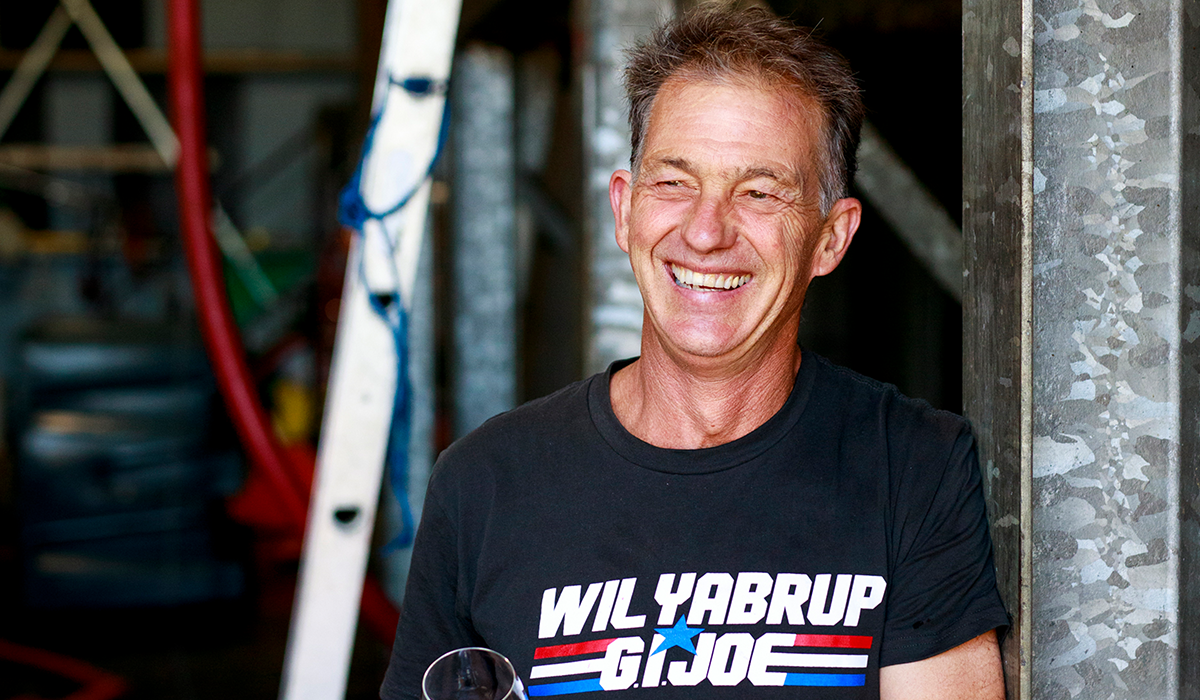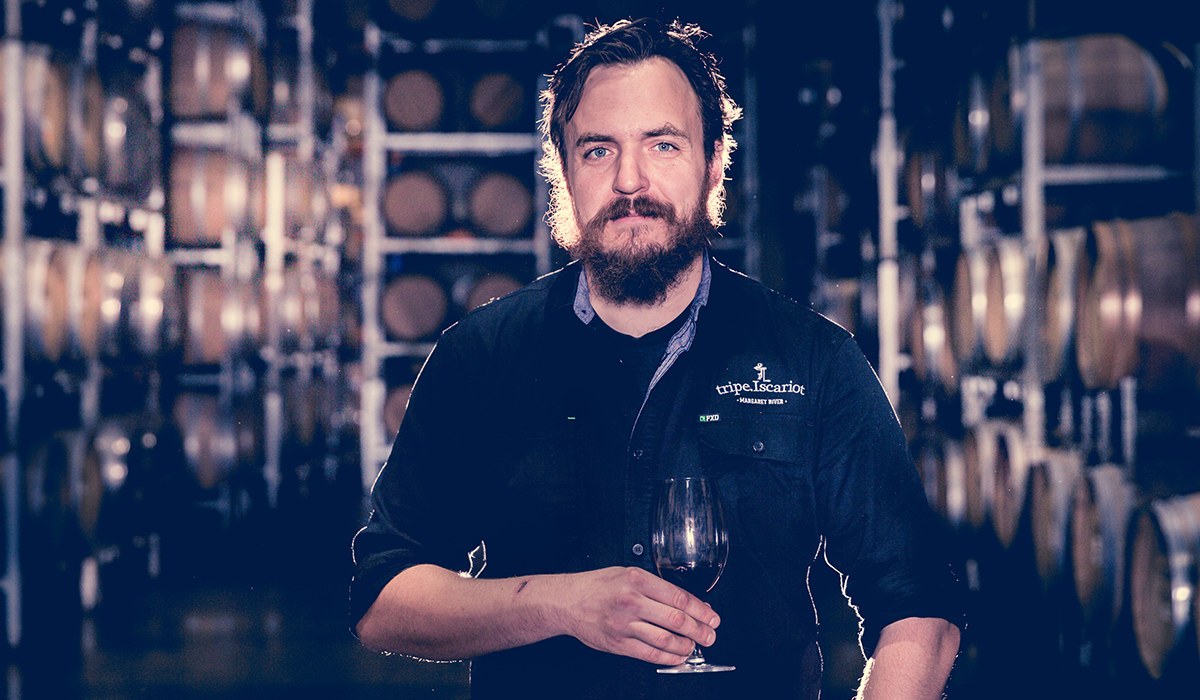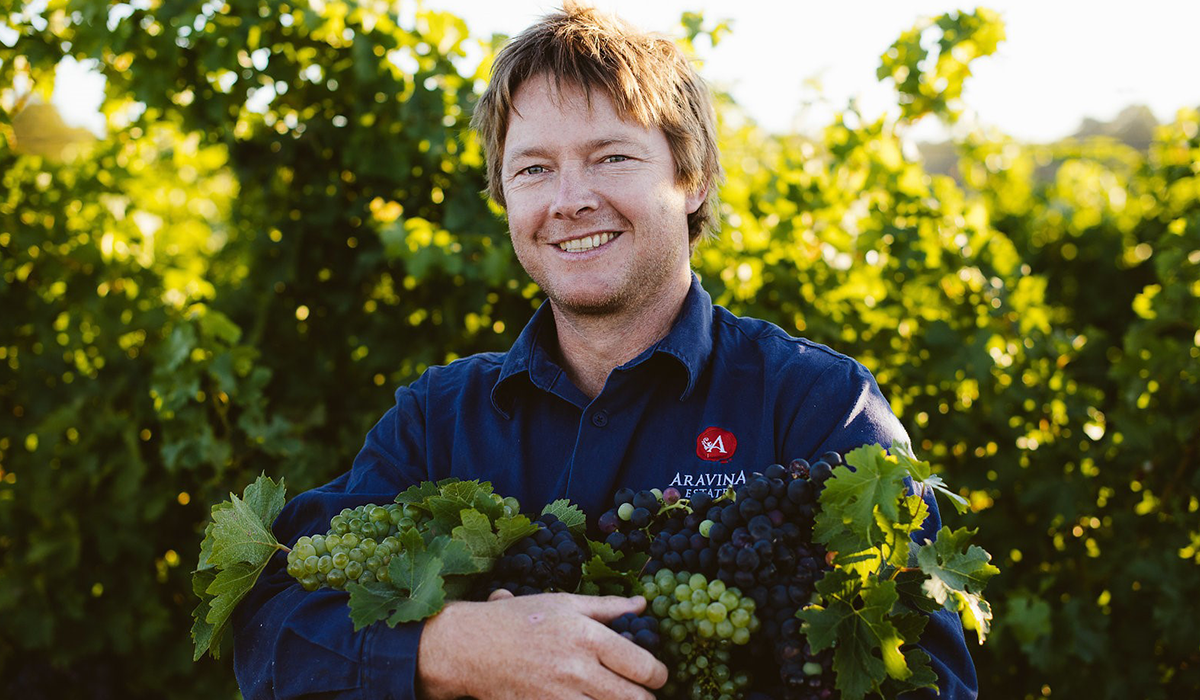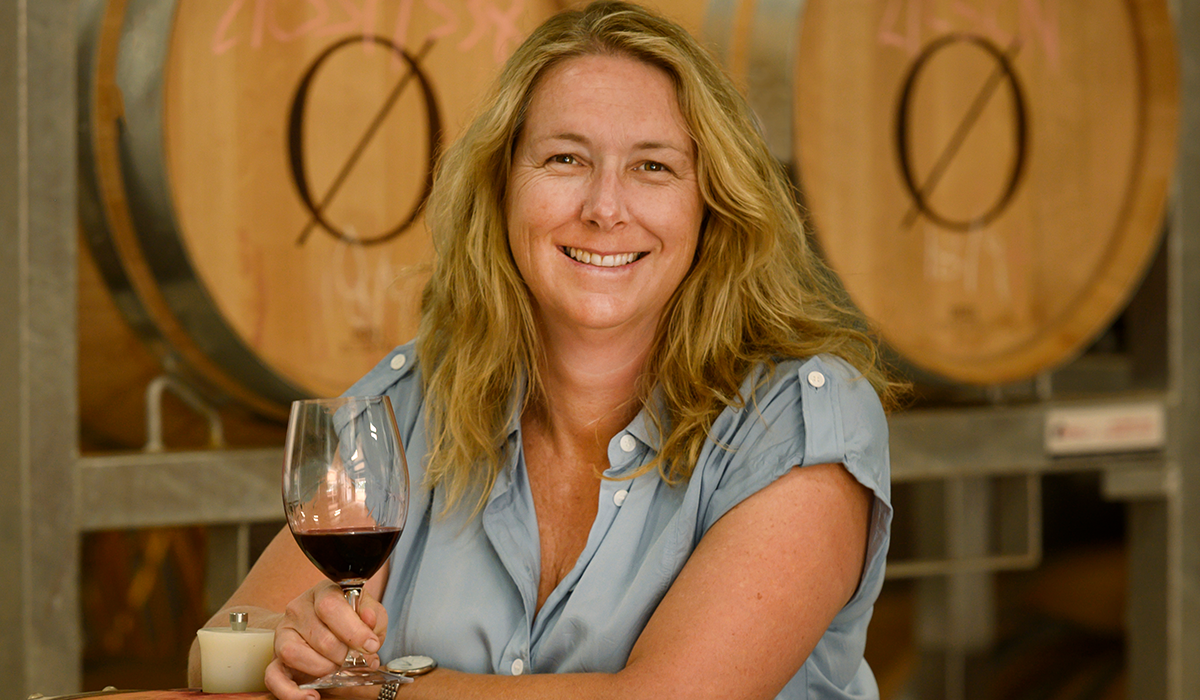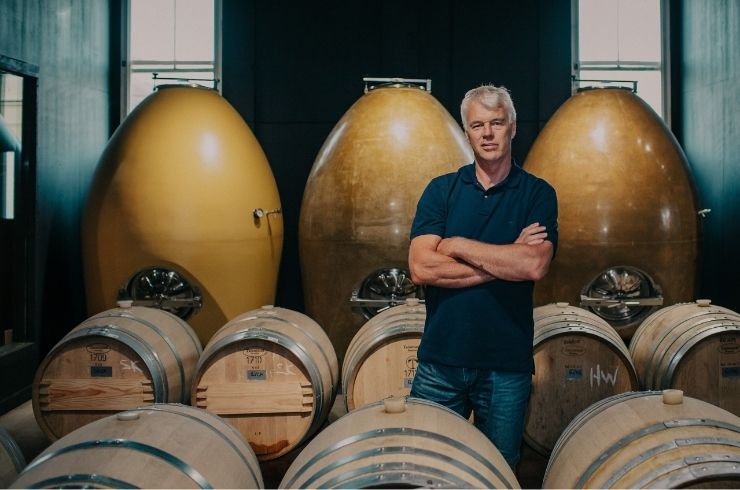Margaret River is renowned for producing world-class chardonnay and cabernet sauvignon and its reputation hinges on those two stars. However, there is so much more diversity to explore, particularly with Italian, Iberian and other varieties. Jane Faulkner gets the alternative view from five producers.
Mark Messenger
Juniper Estate and Higher Plane
If there’s one winemaker immersed in a raft of grape varieties and styles, it is Mark Messenger. Celebrating 25 years at Juniper Estate, in his quiet, meticulous way he goes about crafting outstanding cabernet sauvignon, shiraz and chardonnay. Yet with the sister label, Higher Plane, he lets rip, having fun with the likes of fiano, verdejo, tempranillo and malbec plus a host of blends.It all started with tempranillo.
“I’ve always enjoyed Spanish reds and, as a point of difference, we bought some fruit [originally from Ferguson Valley in Geographe] and made a wine to see what consumers thought and they loved it.”
Eventually, five tempranillo clones were planted at Higher Plane’s southern vineyard, with the first crop in 2015. He’s stoked with the 2023 vintage. “The tannins are good and boy, they are tricky tannins. They can be so dry when not right. We’re making a crianza style, easy drinking, and it’s one of our most popular wines.”
As one of the first to venture into Spanish territory, he admits it was lonely at the beginning, but it’s gaining traction with punters asking for it and more discussion regionally. One of the reasons he planted five clones is to gauge the ones best suited to his patch.
As a complementary white, Mark considered vermentino, arneis and pinot gris but settled on fiano because “it would grow well here and I like the wine. It has character and suits the Western Australian climate. I really like the phenolics as it’s in a Euro style.”
The first vintage came in 2016 and there’s been some tweaking using some skin ferment to bring extra texture, and using older, larger oak. He doesn’t have enough verdejo yet but he’s confident it will one day be a stand-alone wine. “It’s different to fiano and anything else we have here. It has texture with freshness…it makes you want to drink more.”
As for malbec, he can’t keep up with demand. And there is no point making a wine if no one comes onboard: “It’s not a flash-in-pan decision to grow a variety, and consumers have to like the result.”
“And I love making them. There’s this freedom and you can have a bit of fun because they are being made in an approachable way and at an approachable price,” Mark says. “Our premium cabernet and chardonnay require a lot of attention and we’re always fine-tuning them. But with the alternatives, we can try something different every year and experiment. It’s liberating.
Remi Guise
tripe.Iscariot, Witchcliffe
South African-born Remi Guise studied viticulture and oenology at Stellenbosch University yet points out, “I’m basically an Australian winemaker, who just started in South Africa. I’ve spent my entire career here in Margs, arriving in 2007.”Under his tripe.Iscariot label, he makes some of the most thrilling and delicious wines I’ve tasted in a long time. And this year, he celebrates 10 years doing so. “I started with a simple model to make wines I wanted to drink and, most importantly, with fruit from vineyards I trust. Back then it might have been a bit more niche and, in time, I’ve become more classically orientated. I guess that’s called maturing.”
However, he does not make alternative varieties for the sake it.
Starting out with grenache, a rosé made from the latter and chardonnay, which he still produces, Remi has also made his mark with chenin blanc – hardly surprising given it’s South Africa’s most important wine.
“Where I’m from, there are very strong cultural links to chenin and a reverence for it. I couldn’t understand why the variety was just so awful [in Western Australia]. They were structurally under-made, sweet and sappy. There was no respect for the grape.”
It’s a variety that’s as complex as chardonnay and, thankfully, chenin blancs are now being made with much more care and attention to detail, especially in Margaret River, with Remi crafting two each expressing their subregion – Karridale and Wilyabrup. Unfortunately, none from the latter was produced in 2021, due to disease pressure. No fruit was picked, which was “the saddest day in my viti-professional life.” Thankfully, Karridale stepped up.
His chenin blancs are textural, complex and compelling. He eschews new oak, ferments on full solids, maybe some skin contact and allows the wines to come together in their own time, without lees stirring.
The other variety with links to his South African roots is the ancient muscat of Alexandria, with many synonyms including zibbibo, although Remi labels his muscat d’Alexandrie. The hand-picked fruit is made in parts: 25 per cent on skins for 153 days, the remainder crushed and on skins for two days, then pressed to oak with high solids and a portion of clarified juice to stainless steel. Half of the oak portion undergoes MLF and, all up, nine months of ageing before this wine comes together. It is “one song sung by many voices, hence the name 'Madrigal'.”
He believes it’s the only muscat d’Alexandrie in Margaret River, a mere 12 rows. The unirrigated fruit comes off Mike Kerrigan’s Hay Shed Hill vineyard, planted around 1977. “It’s a testament to Mike’s passion for the variety because you kick the dirt and smell the soil and you know it’s really good cabernet dirt. It’s a survivor story for this muscat.”
The wine is dry but full of texture. Remi says it’s his “wow wine” because of the surprise people feel when tasting it. “You put this on the dinner table and it disappears. It’s easy to love and get into,” he says. “I am biased but it is so drinkable and I drink a lot of it.”
Ryan Aggiss
Aravina Estate
In November 2018, Ryan Aggiss fell for a Portuguese called arinto. He was judging at the Australian Alternative Varieties Wine Show in Mildura and was smitten when he tasted the high-acid white. Like a siren calling, it seduced him.“I remember the Other White Varietal class and the wine (which turned out to be a Ricca Terra Riverland arinto) and thinking, I don’t know what this alluring, flavoursome and sexy wine is, but you’re one of the most enticing wines I’ve tasted in a long time. I was like a kid in a candy store.”
His quest began. Given the rarity of it in Australia, it’s a miracle Ryan found any, but luck was on his side. In 2021, he grafted it onto 30-year-old sauvignon blanc and last year, the first crop of “big, beautiful bunches of fruit with so much flavour and intensity” emerged.
Being a tyro with the variety, he decided to do as little as possible in terms of winemaking: he left it on gross lees in stainless steel tank where it developed a nice clip of briny aldehyde. Tasting the juice made him hungry.
The wine is a conversation starter – it’s the only arinto in Margaret River. He’s chuffed about that but, more importantly, the inaugural release (2022) is fabulous: full of lemon with a distinct briny, oyster shell tang, so juicy and full of super-fine acidity. Great on its own, better with food.
Ryan’s keen to keep ahead of the curve in terms of trends and styles, which is why lighter reds with lower alcohol such as Nouveau Rouge – a blend of grenache, shiraz and tempranillo – feature. It’s a wine to chill down in warmer weather.
He’s also planted more grenache, malbec, and now touriga, because he wants to make a savoury tempranillo touriga blend, inspired by McLaren Vale winemaker Stephen Pannell, who makes an excellent one.
“If I could sit down with some charcuterie and olives and guzzle that wine, I’d be the happiest man in the world,” he says. “Not everyone gets a free licence [to make such wines] so I’m going for it."
Cath Oates
Oates End, Wilyabrup
Cath Oates can thank her brother, Russ, for kickstarting her tempranillo obsession. As a grape grower, managing the family Wilagri vineyard, comprising regional stalwarts such as cabernet sauvignon and chardonnay, he took advice from Ian and Ani Lewis, the original Clairault owners, to plant the Iberian red. So, 10 years ago, he lopped the tops off some merlot and grafted a hectare.As a grower, tempranillo was destined to be sold to other producers. Alas, there were no takers and back then, Cath was chief winemaker at Plantagenet Wines, only returning to focus on Oates End in 2015.
“Russ nearly chain-sawed the tempranillo, but as it turned out, there was a bit of serendipity because Mess [Mark Messenger at Juniper] and Cape Mentelle did take the fruit.”
Now it’s allocated to Oates End. And a year ago, Russ planted another hectare on its own roots. All for his sister to enjoy. Although somewhat ironically, Cath says, Margaret River is not climatically suited to the variety.
“It’s super continental and loves the warm but if left to hang out, there would be no acid left. It’s just bloody hard to grow here.” What to do? She picks on acid and that means incorporating slightly unripe astringent tannins and then adapting the winemaking to make a compelling drink. That’s tough and risky. Not for Cath.
“I love the slight astringency, the herbal character. I handle the fruit gently not extracting it and there’s a bit of a carbonic feel to it. Pressed gently to older puncheons and left for about nine months. My baby is starting to get a following now. It’s great.”
Cath would love to convince her brother to plant just one more variety: “I’d really love albarino so it could be the white partner to tempranillo.” Come on Russ. Help your sister out.
Luke Jolliffe
Stella Bella Wines/Otro Vino, Karridale
While precision and polish underpin the Stella Bella range, incorporating the classic Margaret River varieties and styles, it also has the Otro Vino or ‘other wine’ label, giving winemaker Luke Jolliffe room to spread his wings in a more creative, alternative way. The labels are eye-catching and the wines palate-catching.Otro Vino allows fruit to take centre stage: picked at the right time, wild fermentation, depending on the style, aged in older oak, bottled unfined and unfiltered, with no additions other than SO2. While there is a chardonnay, it’s the alternative mixes that are cool. Created in 2017, the range includes rosé made from tempranillo and sangiovese, a red dubbed the Italian, which is predominantly sangiovese with a splash of merlot, and a tempranillo, shiraz and malbec blend. Luke admits he’s passionate about sangiovese, less so the Spanish red.
Planted in 2001 on the Luminosa vineyard, “from a Margaret River point of view, sangiovese is very fickle and requires lot of love in the vineyard. Everything we do, we try to make sure we don’t let those berries get too big.” He wants concentrated flavours at a lower sugar level while retaining the higher acidity. “It’s about getting the balance right.”
Luke had never made a sangiovese before he started at Stella Bella but knows when he became smitten. While working at Hardy’s in McLaren Vale, he recalls drinking a Podere Poggio Scalette Il Carbonaione 1997; “one of my favourite wines and it spearheaded my love of sangiovese.” And visiting Tuscany, specifically Chianti, when friend Justin Bubb worked at Castello di Gabbiano (he founded BABO wines), he asked a lot of questions and tasted a lot of wines. All research, of course.
Hardly surprising his Otro Vino The Italian is based on a Chianti Classico style – 80 per cent sangiovese and 20 per cent merlot. It’s savoury, full of cherry flavours and refreshing acidity.
